2.6: Polynomial Long Division
( \newcommand{\kernel}{\mathrm{null}\,}\)
Polynomial long division has many similarities to numerical long division, so it is important that we understand how and why numerical long division works the way it does before discussing polynomial long division. First the HOW?
Given the numerical problem
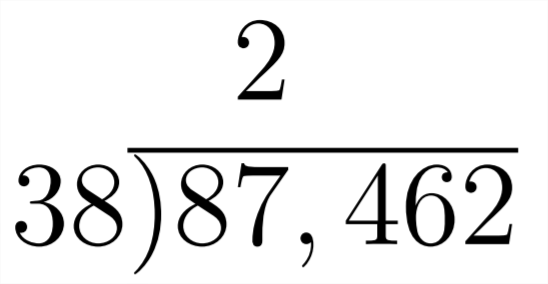
Often the first step in numerical long division is to say "Does 38 divide into
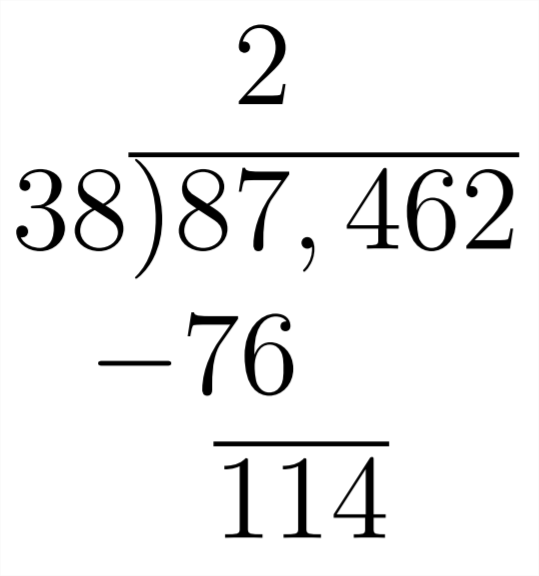
Here, we see that
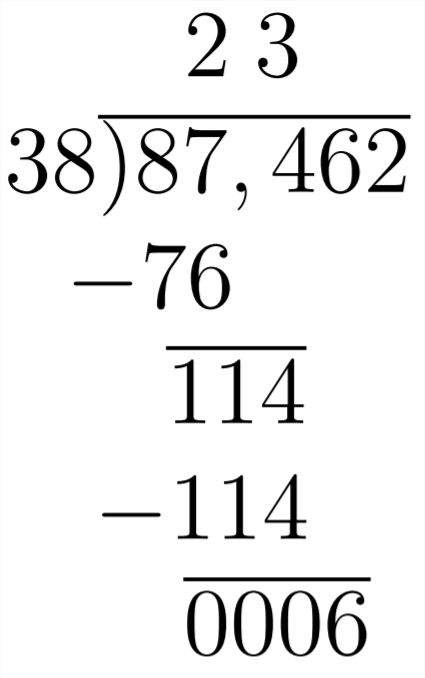
After including the
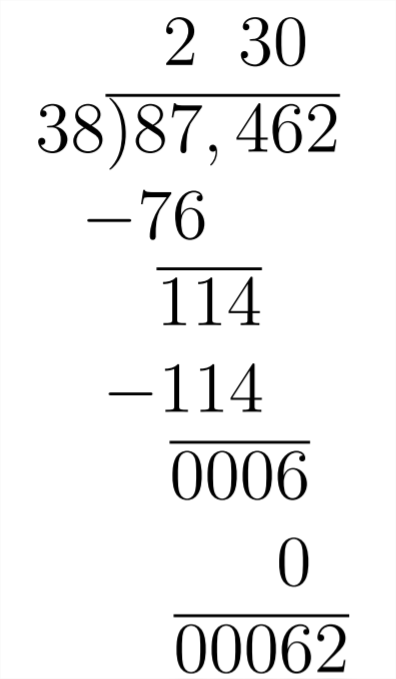
Now that we have included all the digits from our original number
So, now we have the solution to the original problem
The WHY? of the long division algorithm is somewhat hidden by the HOW? In the first step, we are determining which place value will hold the first digit of our answer. When we determine that 38 does divide into
Now we need to determine how many times 38 will divide into
We can see that we won't need any tens in our answer, and that 38 divides into 62 one time with 24 left over, thus the answer is 2 thousands, 3 hundreds, no tens, 1 and a remainder of
Polynomial long division works in much the same way that numerical long division does. Given a problem
Let's look at this with the example
So, we are looking to answer the question:
If we want to mulitply
Now we're working with this:
But the
The issue this raises is that the next multiplication
In the next round of mutiplication, we're going to want to bring the
Now we also know that the remainder is zero, because
This method makes the reasoning behind dividing polynomials somewhat more apparent than the long division process, but it is more cumbersome. The way that polynomial long division is usually approached is as follows:

Then, just as we did in the other method, we question "What should we multiply

Then we multiply

This indicates that we'll have the

This means we'll need to multiply by

Here, we still need to pick up a
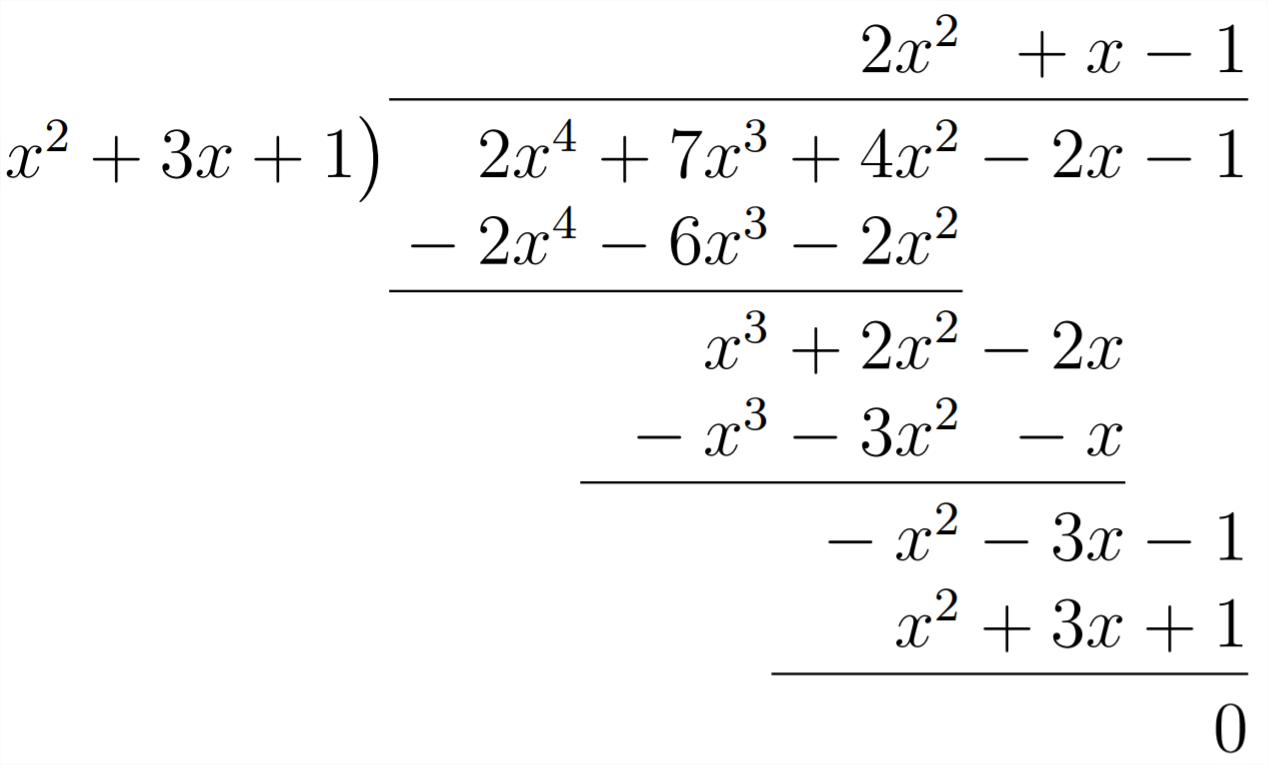
Because
Example
Divide:
First, we set up the problem:

Then, we question: "What do we need to multiply

Then, we multiply, change signs (subtract) and combine like terms:

Now we'll need to multiply by
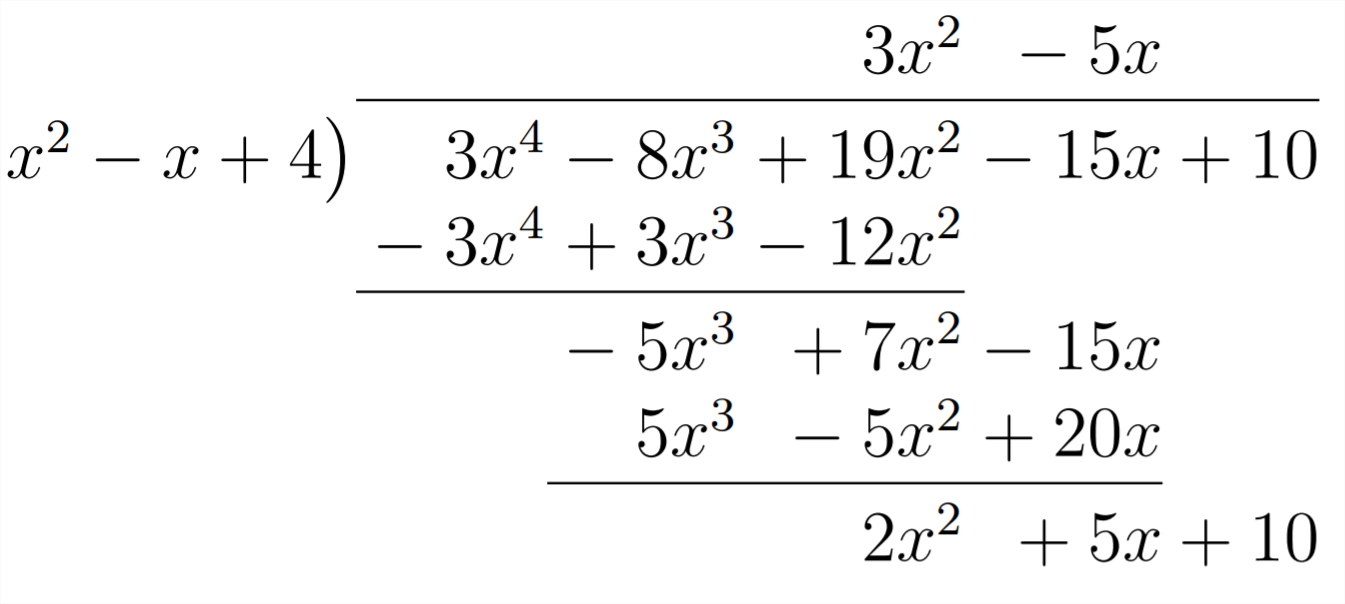
We need
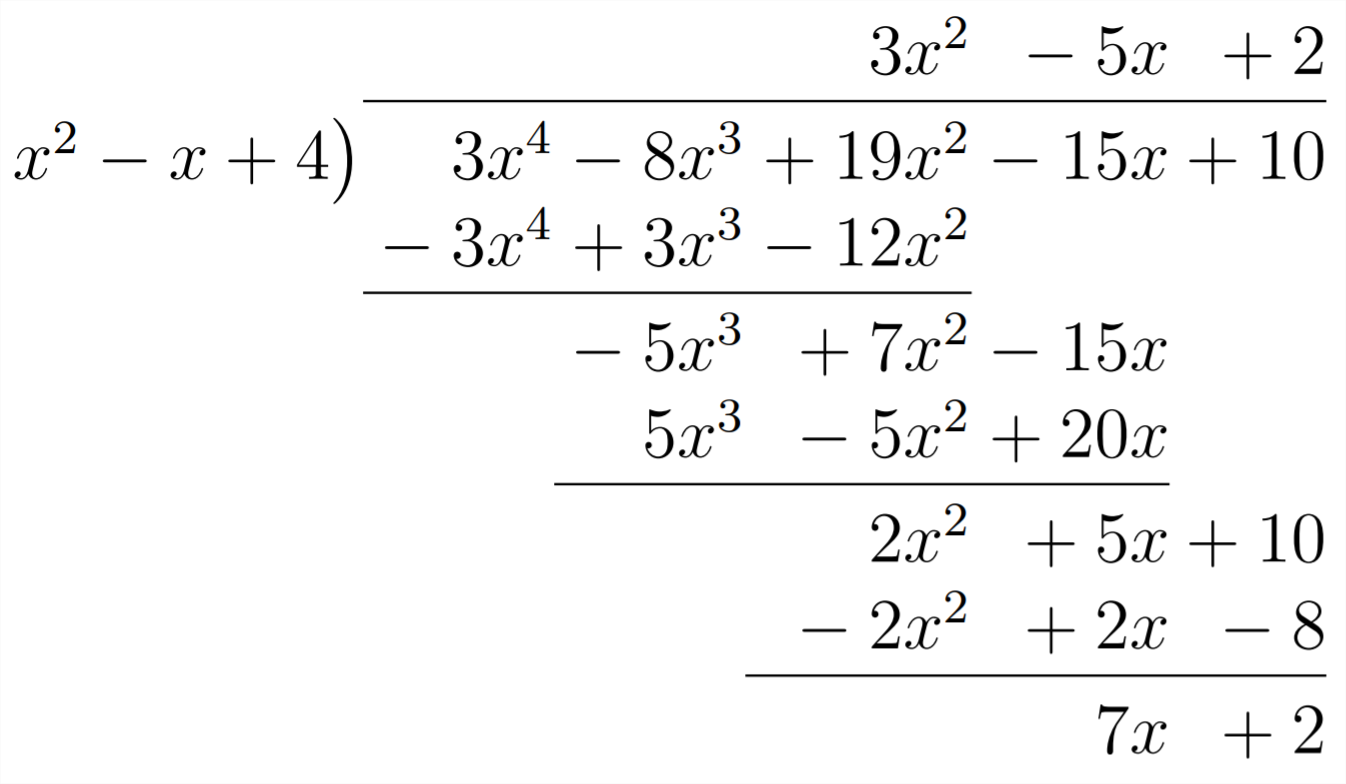
Because there is no positive power of
So:
Exercises 2.6
Find the quotient in each problem.
1)
2)
3)
4)
5)
6)
7)
8)
9)
10)
11)
12)
13)
14)


